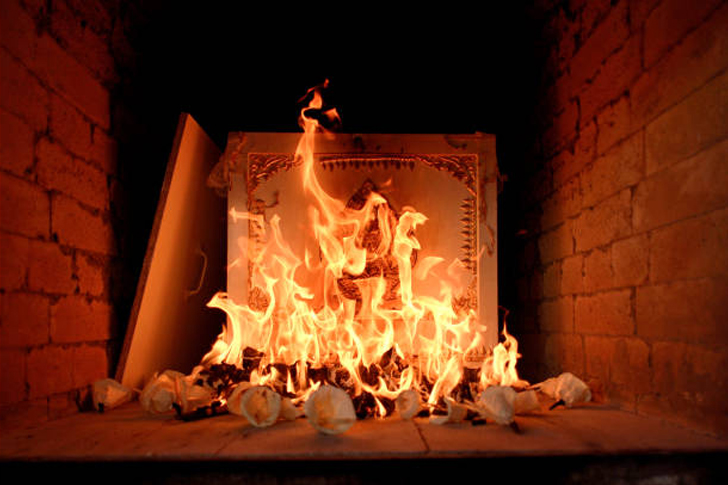Cremation as an Economical Option for End-of-Life Planning in 2023
In 2023, end-of-life planning remains a crucial topic that many hesitate to discuss openly, yet is an inseparable part of human experience. Among the options available for after-death care, cremation has emerged as an economically viable choice significantly influencing decision-making in families across various socio-economic backgrounds. This article explores why cremation is being embraced as a cost-effective alternative, the factors contributing to its affordability, and some practical considerations for those pondering this option.

The Rising Cost of Traditional Burials
Burial costs have been steadily climbing over the years. According to the National Funeral Directors Association (NFDA), the median cost of a traditional funeral with burial and vault was estimated at over $9,000 in 2021, a price that has likely increased with inflationary pressures in 2023. This cost traditionally includes services like the casket, embalming, the funeral service, burial plot, and headstone, each contributing to a considerable financial burden for the bereaved family.
Cremation as a Cost-Effective Solution
Cremation, by comparison, offers a less expensive alternative. The Cremation Association of North America (CANA) states that the average cost of cremation with a memorial service is substantially lower than a full-service burial, often by thousands of dollars. Direct cremation, where the body is cremated shortly after death without a formal funeral service, presents the most economical option, typically ranging between $600 to $1,000. This stark difference in costs can be attributed to the absence of several charges that escalate the total expenses of a burial, such as the casket, burial plot, and headstone.
Factors Contributing to the Economic Viability of Cremation
Several factors contribute to the cost-efficiency of cremation. First, the process requires fewer physical resources—there is no need for a burial plot or vault, which are significant expenses. Furthermore, cremation does not necessitate embalming unless a public viewing is requested, saving additional costs. Minimalist urns for ashes can also be purchased at a fraction of the price of a casket, and many families choose to scatter the ashes in a meaningful place, eliminating the need for monument expenses.
Environmental and Social Considerations
Aside from economic factors, cremation is perceived as a more environmentally friendly option than traditional burial, appealing to the ecological concerns of many individuals. Traditional burials often involve embalming chemicals and non-biodegradable materials, while cremation leaves a smaller ecological footprint. Moreover, as urban areas become denser and cemetery space more scarce, cremation offers a practical solution to the limitations of physical burial space.
Increasing Acceptance and Flexibility
Cremation’s growing popularity is also fueled by its acceptance across various cultures and religions, with many religious stances on cremation relaxing in recent decades. This broader acceptance has allowed more individuals to consider it as a viable option. Furthermore, cremation provides flexibility in memorials and the handling of remains, such as the ability to hold a memorial service at a more convenient time when all family members can attend, or even to divide ashes amongst loved ones.
Practical Planning Considerations
When considering cremation, it is essential to discuss and plan ahead, ensuring that end-of-life wishes are precisely understood and respected. Individuals should communicate their desires with family members and, ideally, make arrangements in advance to lock in costs at today’s prices, avoiding the financial strain of inflated expenses in the future. Many choose to prepay with their chosen cremation provider or establish a payable-on-death account to cover costs, making the process smoother and less burdensome for their loved ones.
The Importance of Research
Choosing an end-of-life option is a deeply personal decision and should be informed by thorough research. It’s important to compare services and prices from multiple providers, as costs and offerings can vary significantly. Look for reviews and ratings to assess the reputation of service providers, and consider consulting with an end-of-life planner or a funeral consumer alliance, which can provide guidance specific to your region and needs.
Conclusion
In conclusion, as the costs associated with traditional funerals continue to rise, cremation stands out as a financially accessible choice that does not compromise the dignity of farewell. Its economic benefits, coupled with environmental considerations and cultural acceptance, make cremation a compelling option for many individuals planning for the inevitable, affording peace of mind to them and their families. Understanding all facets of cremation will help in making an informed decision that aligns with personal, financial, and environmental values.
As we move further into 2023 and beyond, the trends in end-of-life planning are likely to evolve, but the importance of making informed, considered choices will remain constant. Whether you are pre-planning for yourself or navigating options following the loss of a loved one, an understanding of cremation’s benefits could be an essential component of the decision-making process.







Recent Comments